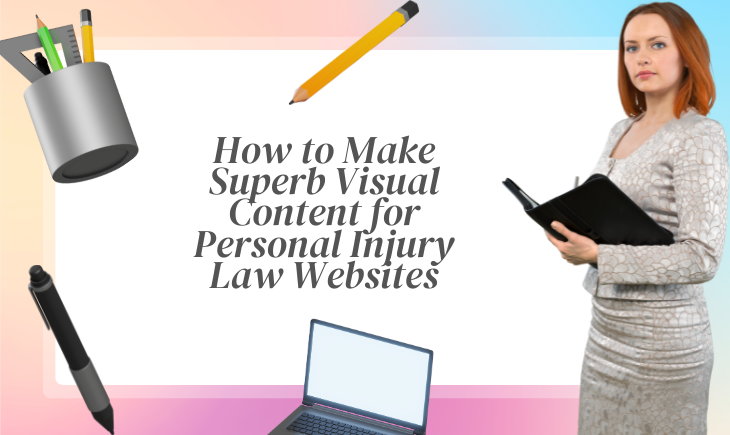Creating excellent visual content for your personal injury law website can enhance engagement, improve user experience, and convey information visually appealingly. Here are ten tips to help you produce compelling visual content that effectively communicates your message:
1. Choose High-Quality Images
Opt for high-resolution images that are clear, professional, and visually appealing. Use stock photos, hire a photographer, or invest in high-quality camera equipment to capture original visuals that align with your brand.
2. Use Relevant and Authentic Imagery
Select visuals relevant to your legal practice and resonate with your target audience. Authentic imagery that reflects diversity, inclusivity, and real-life situations can help create a connection with visitors.
3. Infographics for Simplifying Complex Concepts
Infographics are a superb way to simplify complex legal concepts and present them in a visually engaging format. Use icons, charts, and diagrams to break down information and make it more digestible.
4. Incorporate Videos
Videos can be a powerful tool to convey information and engage visitors. Create short explainer videos, client testimonials, or educational videos that address common legal issues. Ensure your videos are well-scripted, professionally edited, and optimized for web viewing.
5. Visualize Data with Charts and Graphs
If you have statistical or data-driven information to present, consider using charts, graphs, or visual representations to make the data more accessible and understandable. This approach helps visitors grasp critical insights at a glance.
6. Create Engaging Social Media Graphics
Develop visually striking graphics optimized for social media platforms. Use captivating visuals, bold typography, and concise text to communicate key messages effectively. Include your law firm’s branding elements for consistency.
7. Design Eye-Catching Infographic Flyers
Design informative and visually appealing flyers that can be downloaded and shared. Use graphics, icons, and a clean layout to present critical information concisely. Ensure the flyer includes your website’s URL and contact details for easy reference.
8. Incorporate Interactive Visuals
Consider enhancing user engagement using interactive elements such as sliders, click-to-reveal content, or interactive timelines. Interactive visuals encourage visitors to interact with your website and actively explore information.
9. Incorporate Branding Elements
Ensure your visual content reflects your law firm’s branding, including your logo, color scheme, and typography. Consistent branding across visual elements creates a cohesive, professional look that strengthens brand recognition.
10. Use Captions and Text Overlay
Add captions or text overlays to provide context or highlight key points when using images or videos. This helps users understand the message even if they cannot listen to audio or prefer visual information.
11. Optimize for Mobile Devices
Ensure your personal injury law visual content is responsive and optimized for mobile devices. A significant portion of law website traffic comes from mobile users, so providing a seamless visual experience across all devices is essential.
12. Test and Gather Feedback
Regularly evaluate the performance of your personal injury law visual content by analyzing engagement metrics and gathering user feedback. This helps you identify what works best for your audience and improve accordingly.
Conclusion
Remember, visual content can capture attention, convey information, and evoke emotions. By following these tips and maintaining a consistent visual style, you can create compelling and impactful visual content that enhances the overall user experience on your law website.






